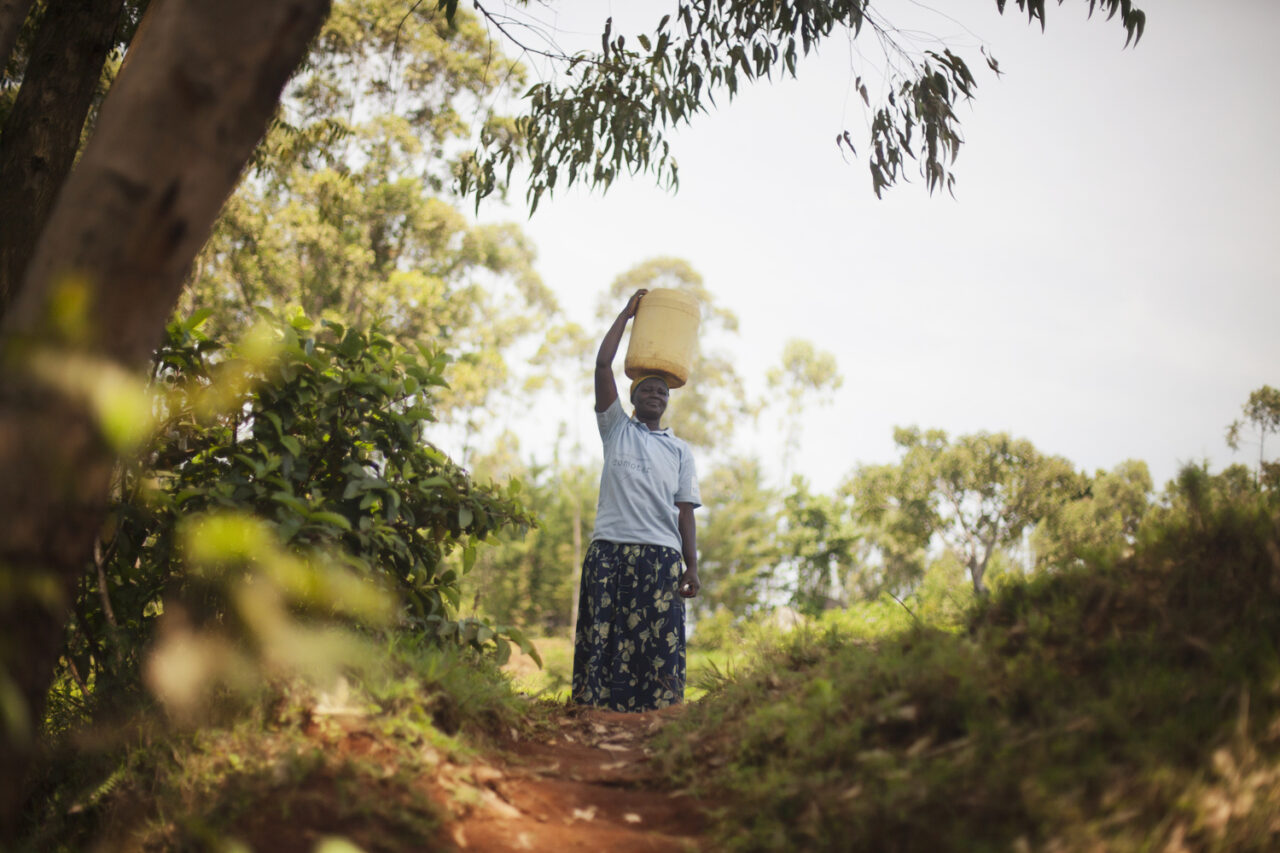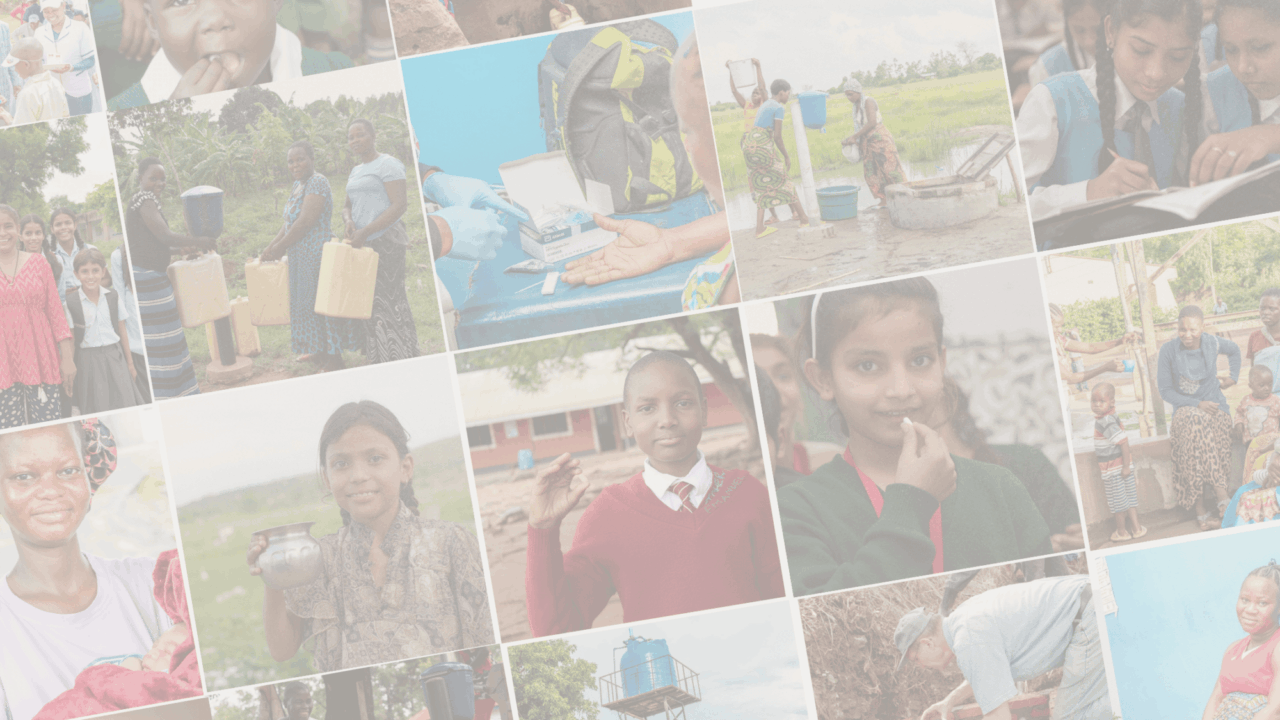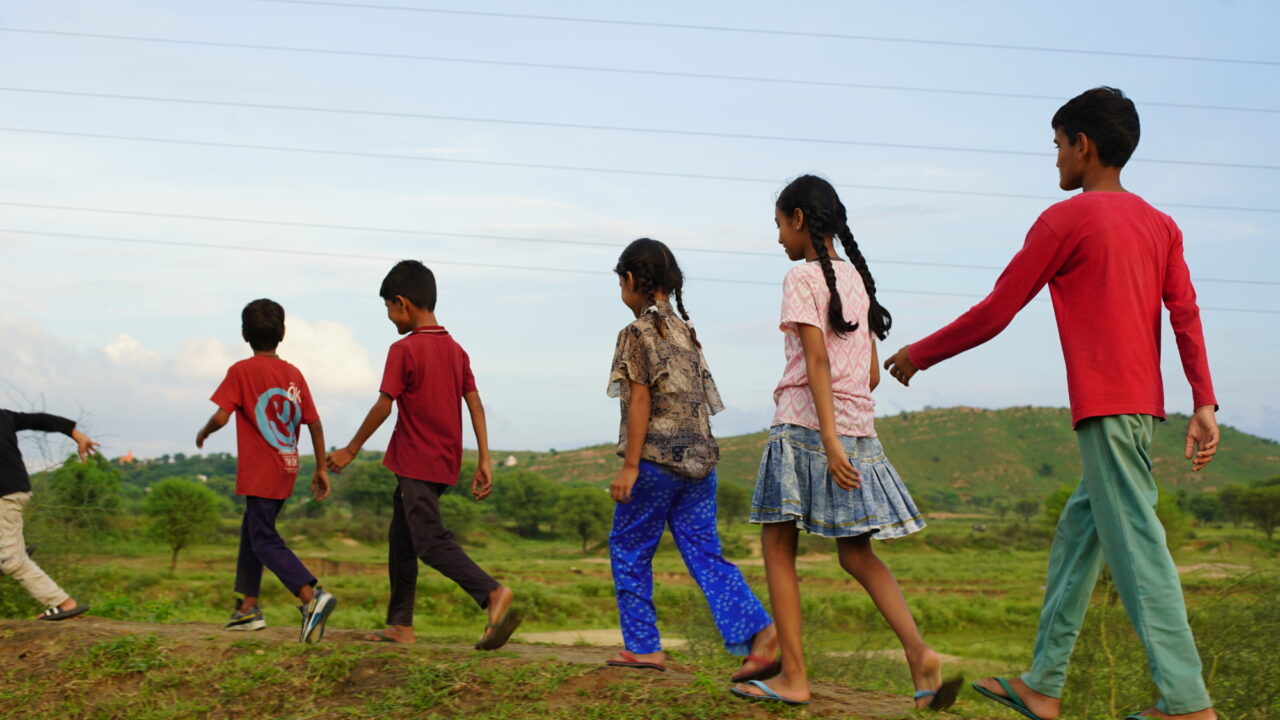Rigorous research tells us that adding a few drops of chlorine to drinking water can prevent one in four child deaths. If that sounds simple, it’s because it is — water chlorination is a brilliant solution because it’s safe, low cost, and scalable.
But providing it to millions of people across multiple countries – that’s not so simple.
Our Safe Water Now program translates evidence into lifesaving impact — we’ve already saved 15,000 young lives, and we’re ramping up to reach millions of more people.
Have you ever wondered how we make it happen – all for less than $1.50 per person per year? Here’s a behind-the-scenes look, in photos, at Safe Water Now.
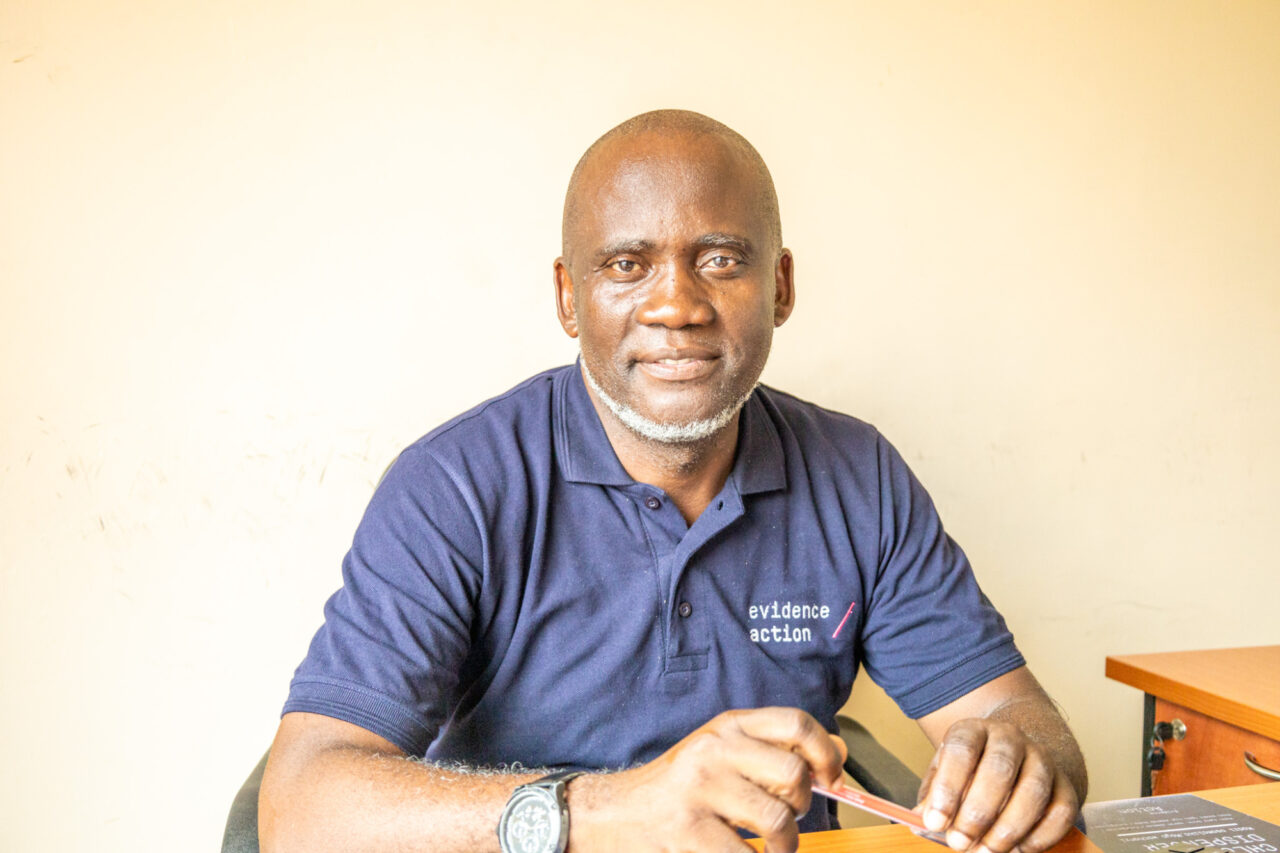
First, you should meet Moses. Our safe water work wouldn’t be possible without the people who drive it — like Moses Chisangwala, our program manager in Malawi. Like his peers in Kenya and Uganda, Moses oversees the implementation of Safe Water Now throughout the country, providing leadership and strategic direction. It’s a big job, especially considering our recent massive expansion through which we quadrupled our footprint in Malawi – installing over 12,000 new chlorine dispensers across seven districts in just 18 months.
Moses credits the successful expansion to his passionate and motivated team. “I’m very proud to be part of a team that has achieved so much,” he shared.
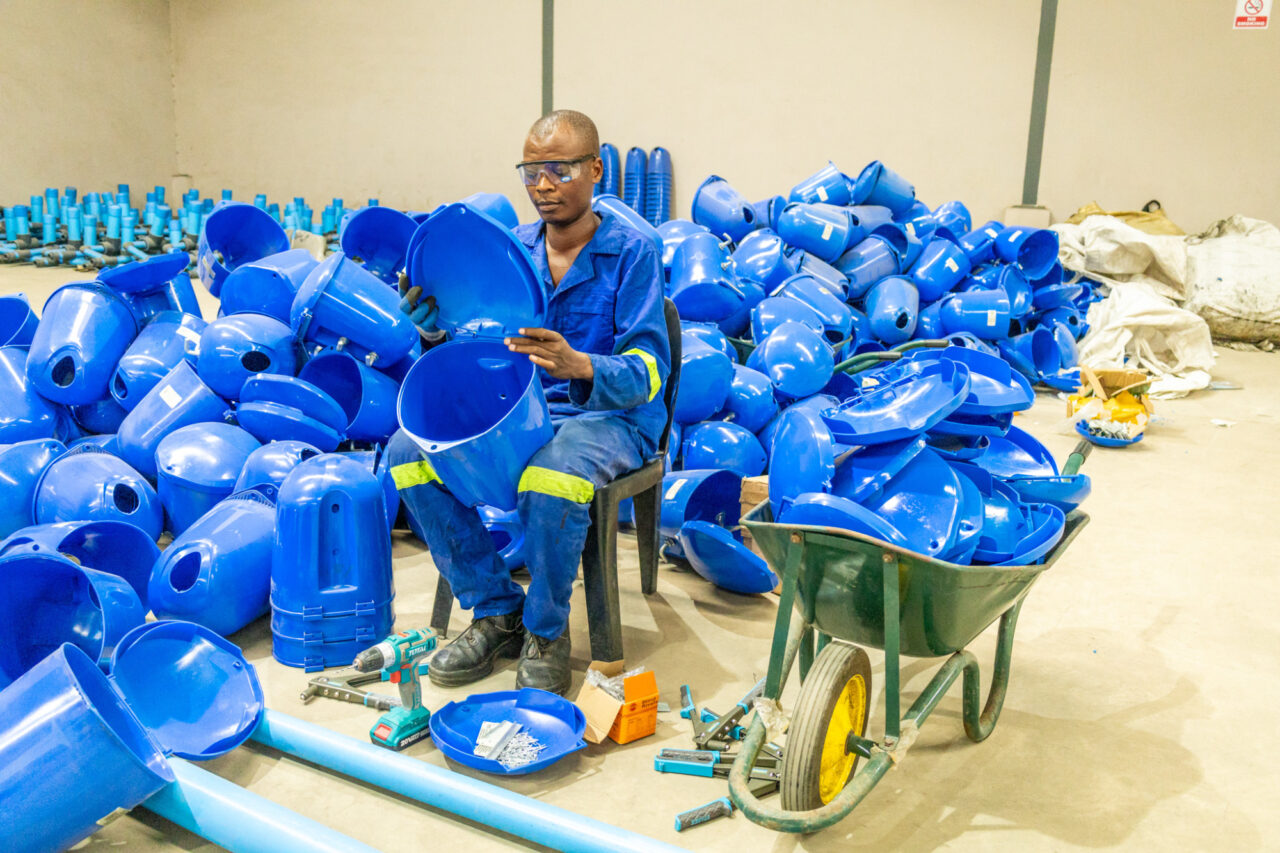
Peek inside one of our warehouses. Before our chlorine dispensers and in-line chlorination devices are installed in communities, they’re assembled and stored in our warehouses across Malawi, Kenya, and Uganda. Both devices are relatively simple in design, but still require careful assembly by our engineers, like Maxwell Munthali in our warehouse in Blantyre, Malawi.
In keeping with our organizational value of “iterate, again,” we’re always striving to improve the ways our interventions work. Our chlorine dispensers were originally metal, but we switched to plastic materials a few years ago – the reasons being that plastic dispensers don’t rust and are much more cost-effective.
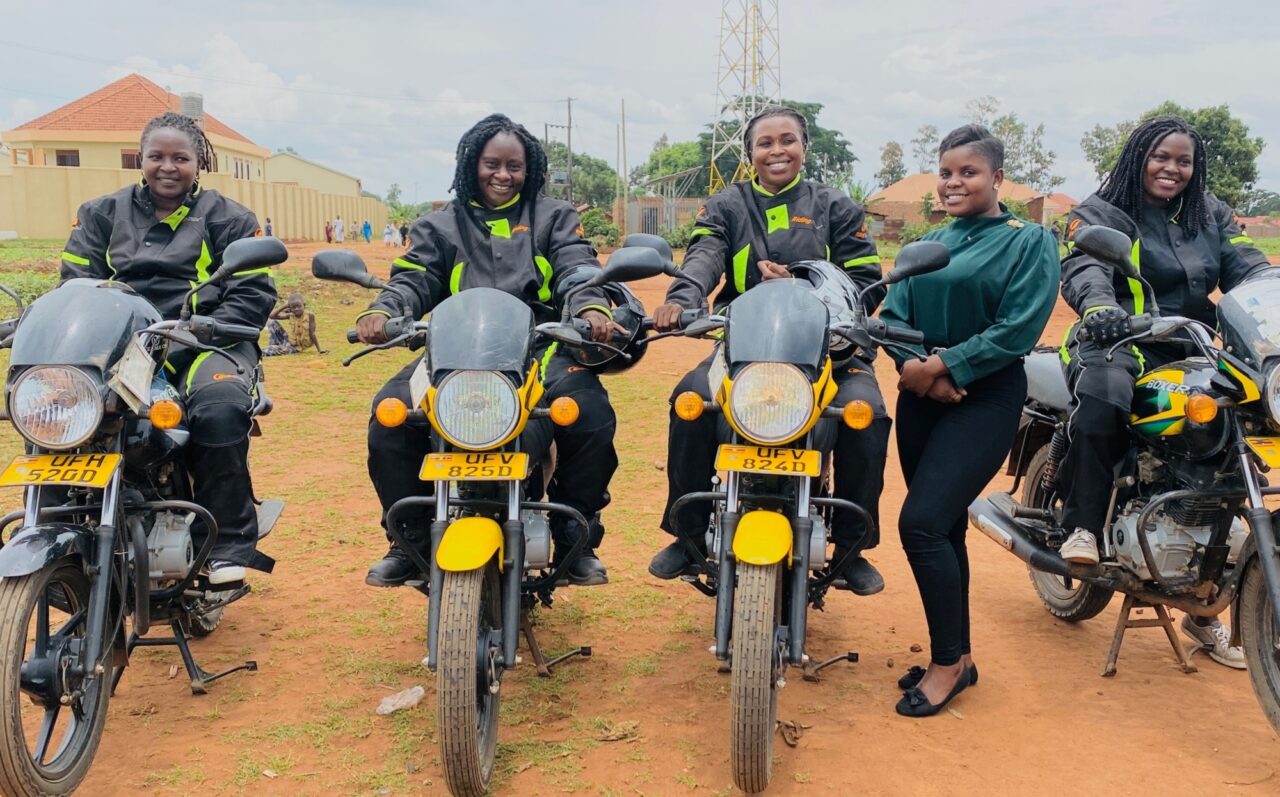
Our circuit riders are always on the road, delivering chlorine to last-mile communities. Safe Water Now’s footprint extends across remote areas that are often hard to reach. The roads can be hazardous, or even impossible, for cars and trucks to navigate – so our team uses motorbikes.
Our circuit riders are a direct link between our offices and the communities we serve. They’re responsible for making sure dispensers are working properly and addressing any functionality issues within 72 hours. And they go above and beyond – during the COVID-19 pandemic, our circuit riders even helped distribute over 1,600 tons of soap so families could wash their hands and stay healthy.
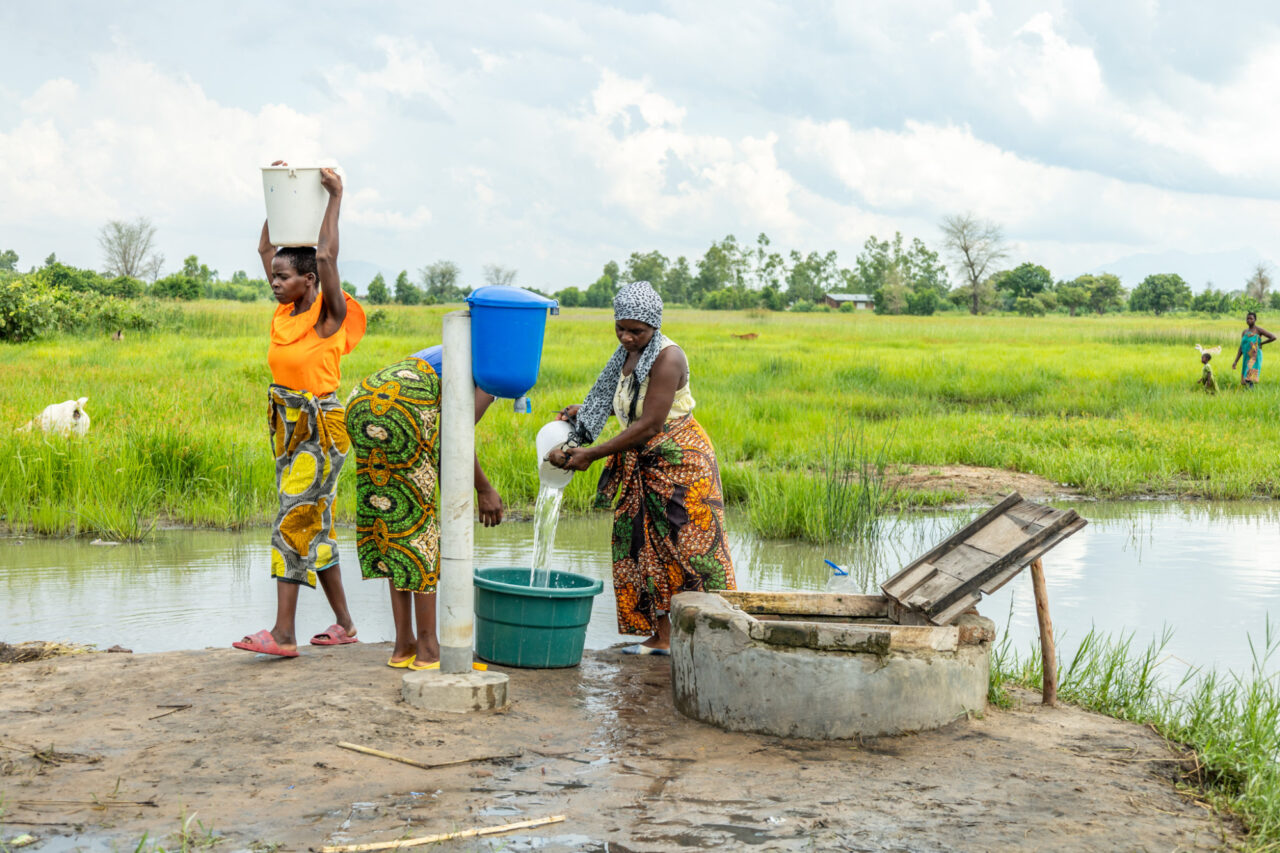
It’s all about human-centered design – making solutions easy to use. We have over 52,000 dispensers in communities across Africa, and each of them is installed right next to a water source.
Here’s how it works: When someone is collecting water, they simply turn the valve on the dispenser, and the correct dose of chlorine drops into their bucket or jerry can. That’s all it takes – the chlorine disinfects the water while they’re walking home.

Our community-elected promoters – over 100,000 strong! – are the backbone of Safe Water Now. Promoters, like Enita Banda in Balaka, Malawi, are trained to manage two crucial activities that make our program successful: 1) Making sure their communities understand the lifesaving benefits of chlorination and are motivated to use the dispensers; and 2) Keeping the dispensers in working order by notifying us when refills or repairs are needed.
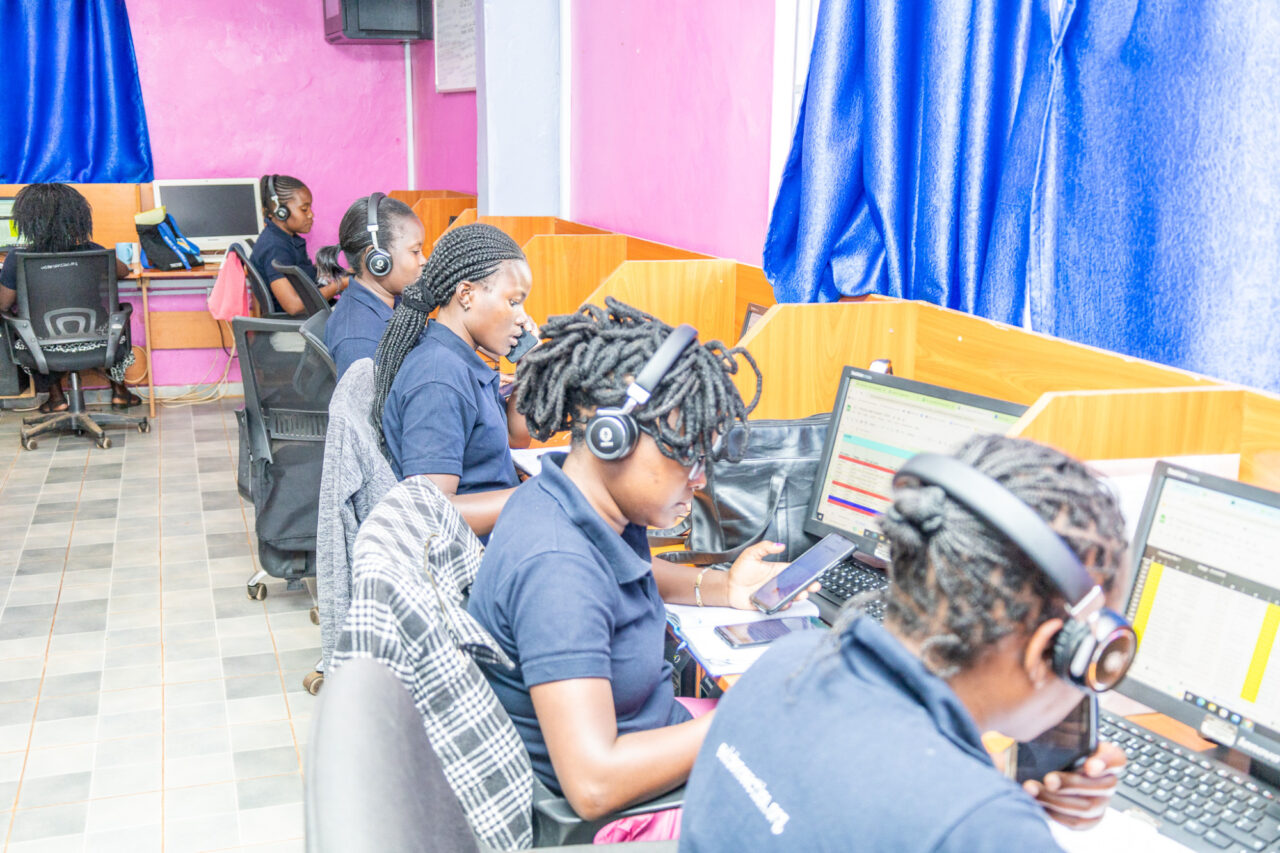
Keeping the program running – one phone call at a time. Our call center teams – like this team in our Chavakali, Kenya office – are busy every day communicating with our circuit riders and Safe Water Now promoters. Their work is crucial to how we keep our vast network of chlorination devices operating across thousands of communities.
The call center team manages a high daily volume, and all conversations are tracked in a robust online database. They ensure everything is moving smoothly – checking that volunteers have the training and resources they need, reporting when and where chlorine refills are needed, and assigning circuit riders to handle any repairs.
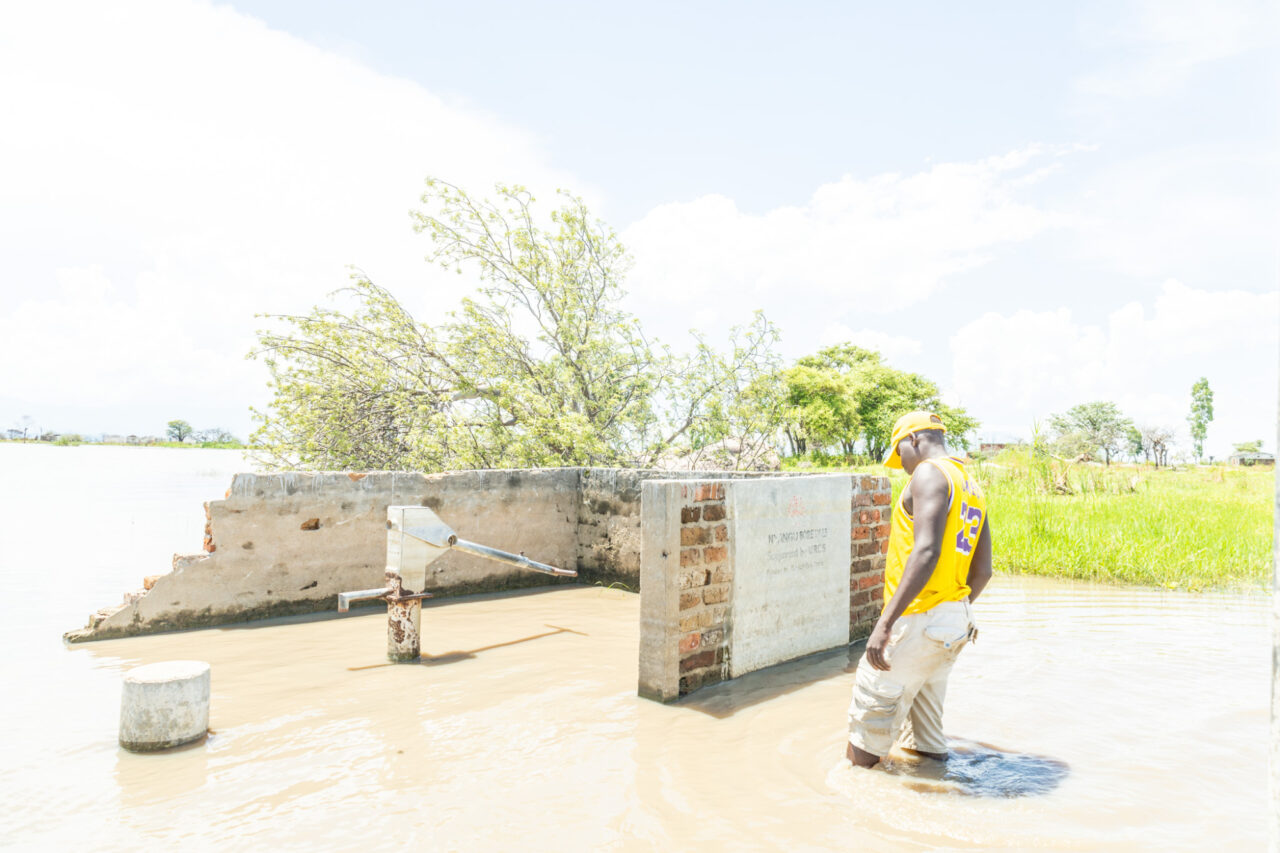
When disaster strikes, protecting access to safe water is crucial. Climate change is fueling extreme weather events – like Cyclone Freddy, one of the worst tropical cyclones on record, which hit Malawi hard in 2023. Flooding from extreme storms often destroys water infrastructure and drives waterborne diseases like cholera – and that’s exactly what happened in Malawi.
But in Safe Water Now communities there, our dispensers helped restore access to safe water in the aftermath of the storm.

We’re always innovating in our Accelerator, looking for the next big thing that could expand our impact. We’ve started installing in-line chlorination devices on communal water tanks in places with piped systems, like Ntonya village in Zomba District, Malawi. These devices automatically chlorinate water as it flows through pipes, so community members don’t have to worry about getting sick — their water is already safe to drink when they collect it.
“With the introduction of the in-line chlorination device, accessing safe water is less of a burden for us, as we have the treated water right here in our community. This has helped us save money as we don't go to hospitals as often. Our children also go to school more frequently.”
In-line chlorination could be a game-changer — it has the potential to dramatically increase the number of people we reach with access to safe water.

Working together, our Safe Water Now teams are saving children’s lives. From our program leaders, to circuit riders and call center staff, to promoters — we couldn’t deliver access to safe water as efficiently and cost-effectively as we do without each person at each step along the way.
We’ve got big plans for Safe Water Now – including launching in India this year – and we aim to reach millions of more people. We’re charting a path toward the first generation raised on safe water.
You too can play a part in Safe Water Now. Will you chip in today with a contribution? Your gift will help us bring this lifesaving program into more communities.
